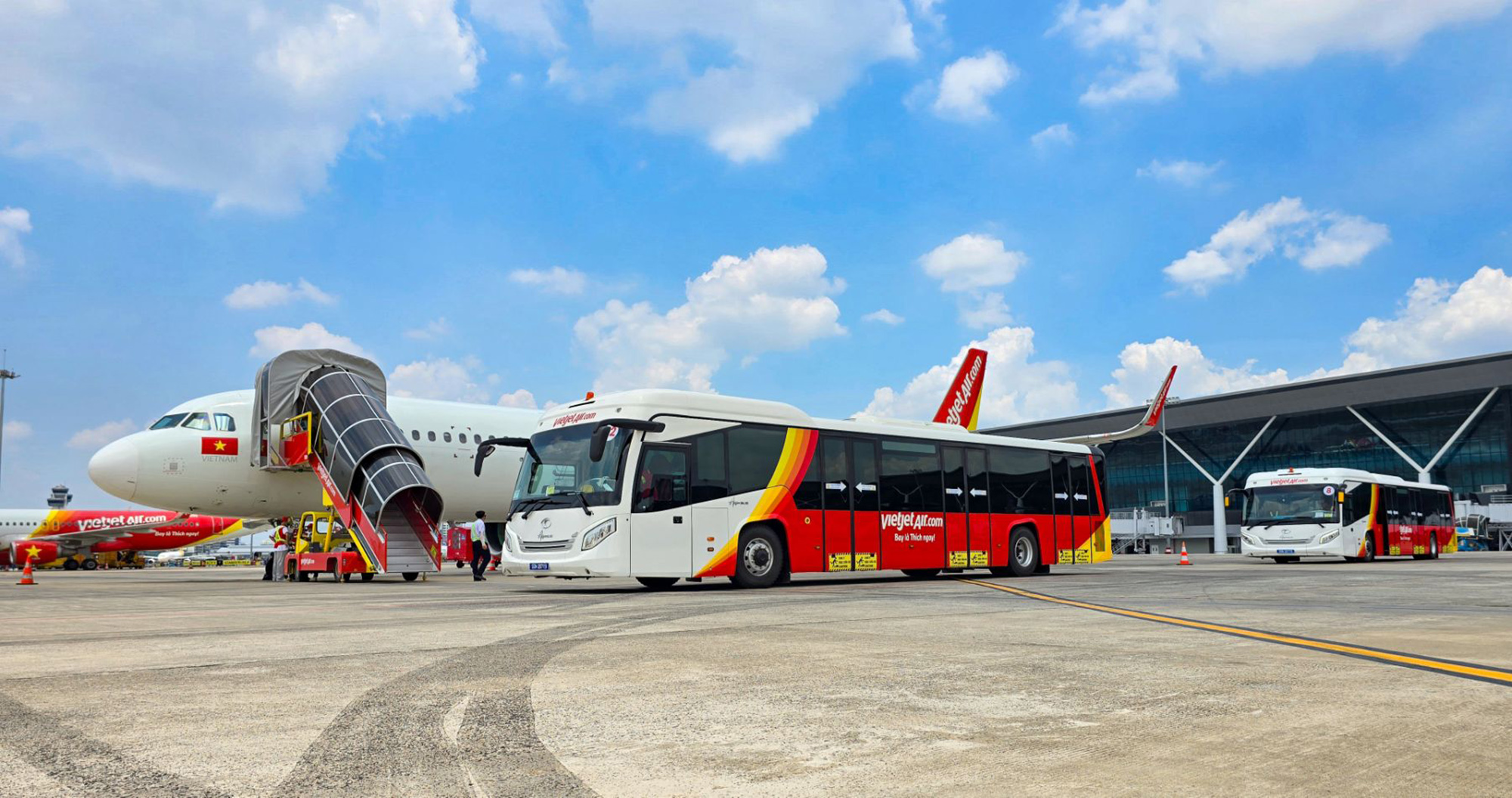This information was revealed in the second quarter 2025 business results report of Vietjet Aviation Joint Stock Company (VJC). Air transport revenue reached 17,681 billion VND, with a pre-tax profit of 775 billion VND, a 52.3% increase compared to the same period in 2024. Consolidated revenue reached 17,885 billion VND, and consolidated pre-tax profit was 815 billion VND, a 151.5% increase year-on-year. Ancillary revenue contributed over 6,893 billion VND.
For the first 6 months of the year, air transport revenue reached 35,600 billion VND, with a pre-tax profit of nearly 1,600 billion VND, a 37% increase compared to the same period in 2024. Consolidated revenue was recorded at 35,800 billion VND, and consolidated pre-tax profit reached 1,600 billion VND, a 65% year-on-year increase.
Recently, Vietjet announced new aircraft orders, implemented self-ground handling services, and won a bid for a project at Long Thanh International Airport. By the end of the second quarter of 2025, the airline operated 154 routes, including 109 international and 45 domestic routes. The airline operated nearly 41,000 flights, serving 7.5 million passengers and transporting almost 29,000 tons of cargo.
 |
A Vietjet aircraft takes off at Tan Son Nhat Airport. Photo: Tai Nguyen |
A Vietjet aircraft takes off at Tan Son Nhat Airport. Photo: Tai Nguyen
As of 30/6, Vietjet's total assets reached over 112,330 billion VND, with a debt-to-equity ratio of 1.76 and a current ratio of 1.44. Cash, cash equivalents, and short-term investments totaled over 7,148 billion VND, along with working capital limits, ensuring strong liquidity.
Cash, bank deposits, and cash equivalents, combined with short-term investments, reached over 9,001 billion VND. This, along with available working capital, ensures the company's ability to meet its short-term obligations.
During the first 6 months of the year, the airline contributed over 4,528 billion VND to the state budget through direct and indirect taxes and fees. Its technical reliability reached 99.53%. Vietjet was honored as the "World's Best Low-Cost Airline" by AirlineRatings and is among the world's top safe airlines.
The second quarter of 2025 also marked Vietjet's expansion of its international network with the launch of routes from Nha Trang to Vladivostok, Khabarovsk, and Blagoveshchensk (Russia). In the Chinese market, the airline operates routes connecting Hanoi and Ho Chi Minh City with Beijing, Guangzhou, and Shanghai. It also opened new routes to India and Japan, and increased domestic flight frequency to Da Nang, Nha Trang, Tuy Hoa, and other destinations.
Along with operational growth, Vietjet continues to invest in its fleet. During French President Macron's visit to Vietnam, the airline ordered an additional 20 A330neo wide-body aircraft, bringing its total order for this aircraft type to 40, the largest in the world. At the 2025 Paris Air Show, Vietjet signed an agreement to purchase 100 A321neo aircraft and 50 purchase rights, making it the largest order at the event and placing Vietjet among the top 10 airlines with the largest order books globally.
 |
Vietjet orders 100 new A320/A321neo aircraft at the Paris Air Show. Photo: Tai Nguyen |
Vietjet orders 100 new A320/A321neo aircraft at the Paris Air Show. Photo: Tai Nguyen
The airline is also promoting self-ground handling at major domestic airports to control service quality, optimize operations, and enhance the passenger experience.
On 14/7, Vietjet was awarded the bid by the Ministry of Construction for the investment, construction, and business operation of aircraft maintenance hangars 3 and 4 at Long Thanh Airport. This is part of the aircraft maintenance complex serving domestic airlines and meeting the operational requirements of phase one of Long Thanh International Airport.
 |
Vietjet handles ground services at major airports across the country. Photo: Tai Nguyen |
Vietjet handles ground services at major airports across the country. Photo: Tai Nguyen
Concluding the second quarter of 2025, Vietjet reported that its separate and consolidated pre-tax profits reached 78% and 75% of the yearly plan, respectively. These strategic steps strengthen the airline's internal resources, creating a foundation for development in the second half of the year, towards sustainable goals and expanding its presence on the global aviation map.
Thai Anh












